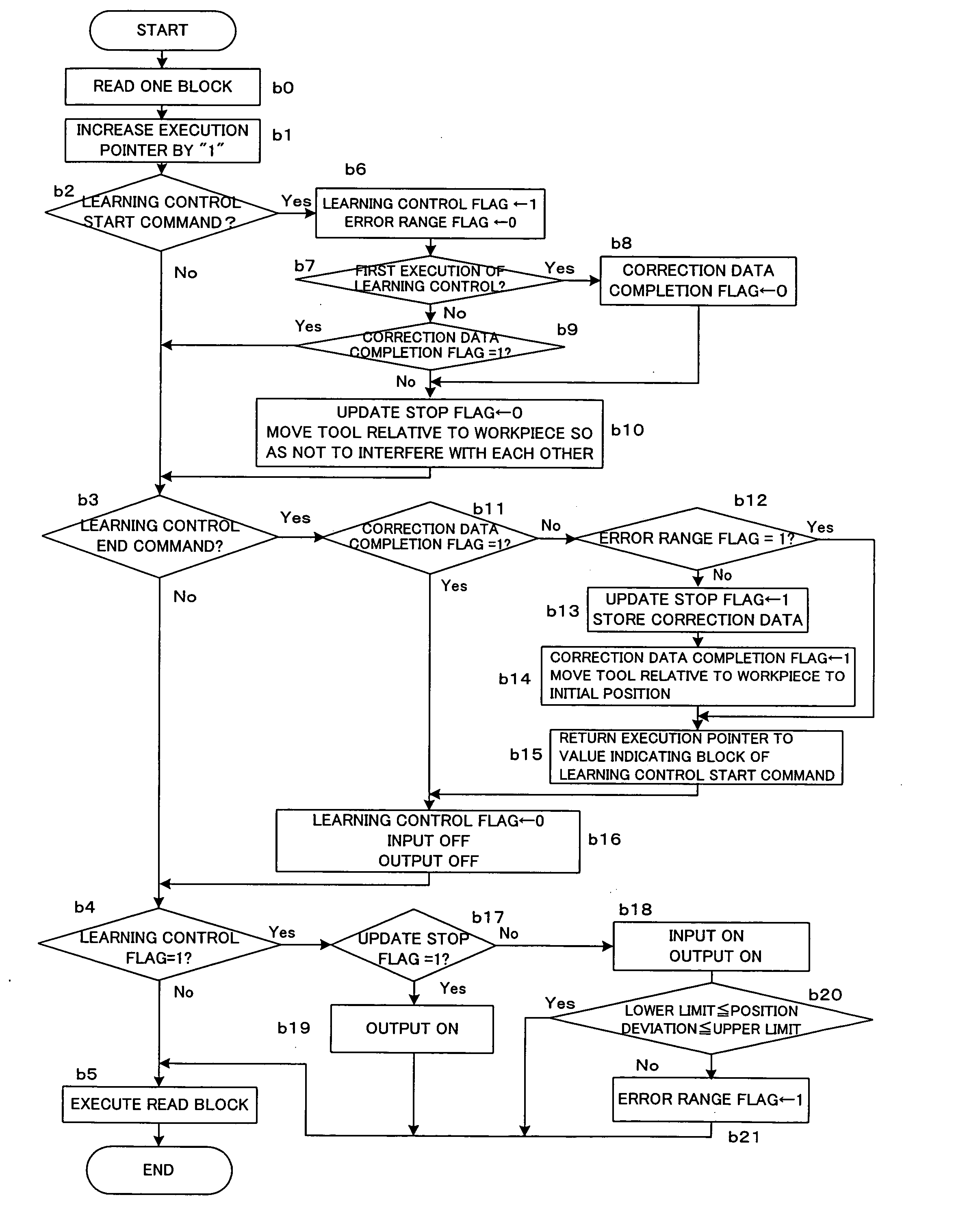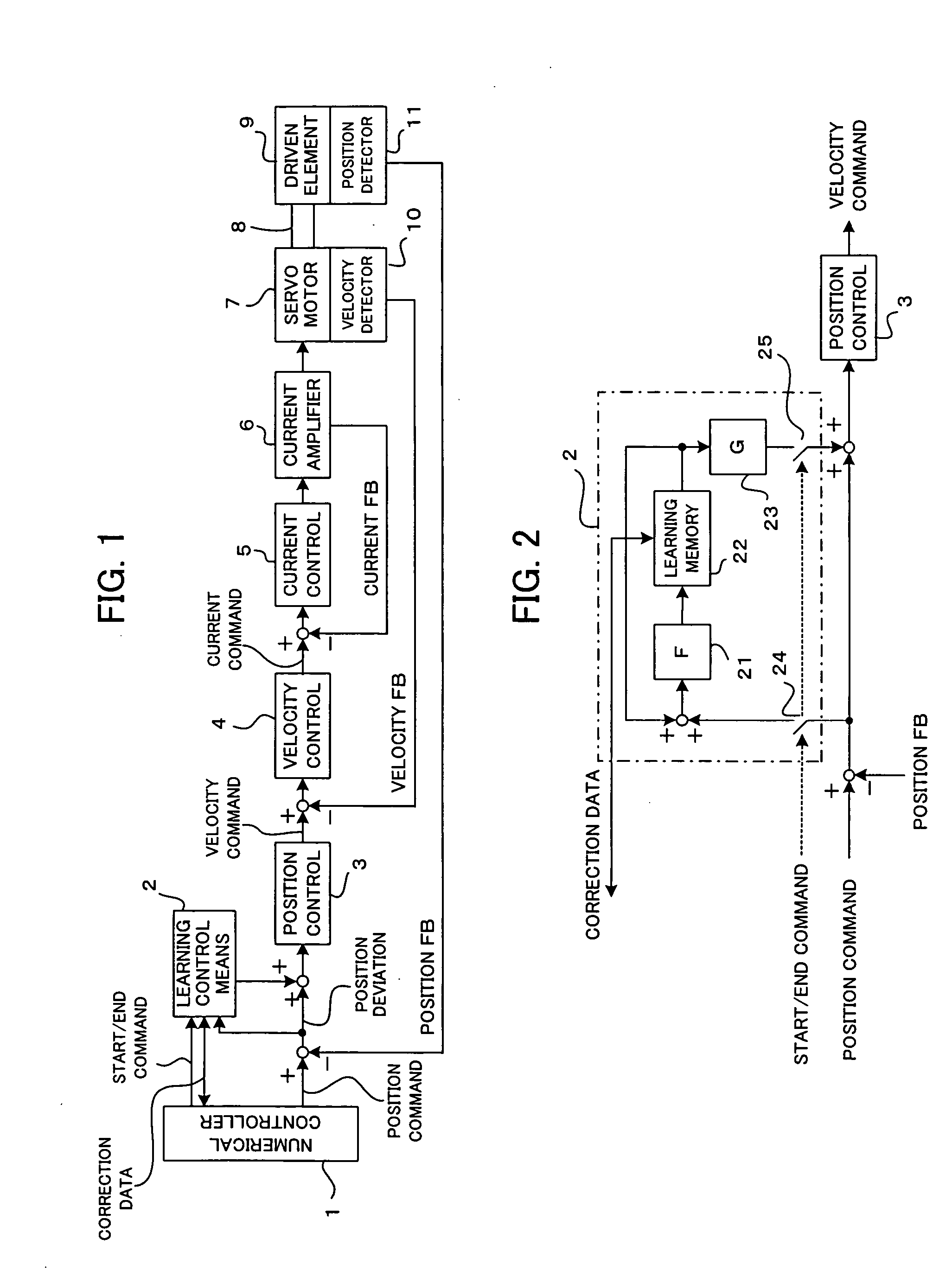Numerical controller
a controller and numerical technology, applied in the field of numerical controllers, can solve the problems of wasteful machining, poor accuracy, workpiece machined, etc., and achieve the effect of reducing the machining cycle tim
- Summary
- Abstract
- Description
- Claims
- Application Information
AI Technical Summary
Benefits of technology
Problems solved by technology
Method used
Image
Examples
first embodiment
[0017]FIG. 1 is a schematic block diagram showing servo control to which is applied learning control performed by a numerical controller according to the present invention. Based on a machining program, a numerical controller 1 outputs a position command to a servo control section of a servomotor 7 for drivingly controlling a driven element 9. In the servo control section, the position, velocity, and current are feedback-controlled for each given control period in response to the position command, whereby the servomotor 7 is driven to drivingly control the driven element 9.
[0018] More specifically, a present position fed back from a position detector 11 for detecting the moved position of the driven element 9 is subtracted from the position command outputted from the numerical controller 1, whereby a position deviation is obtained. In a position control section 3, a velocity command is obtained by multiplying the position deviation by a position loop gain. Further, a velocity deviat...
second embodiment
[0043]FIG. 4 is a flowchart showing learning control management processing according to the
[0044] As seen from the comparison between FIGS. 3 and 4, Steps b0 to b19 of FIG. 4 correspond to Steps a0 to a 19, respectively. The second embodiment differs from the first embodiment in the details of Steps b6, b8, b15 and b12. Step b6 additionally includes processing for setting an error range flag to 0. Step b8 does not include processing for setting the repetition counter to 1. Step b15 does not include processing for adding 1 to the repetition counter value. In Step b12, whether or not the creation of the correction data is completed is determined based not on the repetition counter value but on whether or not the error range flag is 1. Further, the second embodiment differs from the first embodiment in that the program additionally includes Steps b20 and b21. In Step b20, whether or not correction data such that the position deviation is converged close to zero is obtained is determine...
PUM
 Login to View More
Login to View More Abstract
Description
Claims
Application Information
 Login to View More
Login to View More - R&D
- Intellectual Property
- Life Sciences
- Materials
- Tech Scout
- Unparalleled Data Quality
- Higher Quality Content
- 60% Fewer Hallucinations
Browse by: Latest US Patents, China's latest patents, Technical Efficacy Thesaurus, Application Domain, Technology Topic, Popular Technical Reports.
© 2025 PatSnap. All rights reserved.Legal|Privacy policy|Modern Slavery Act Transparency Statement|Sitemap|About US| Contact US: help@patsnap.com



